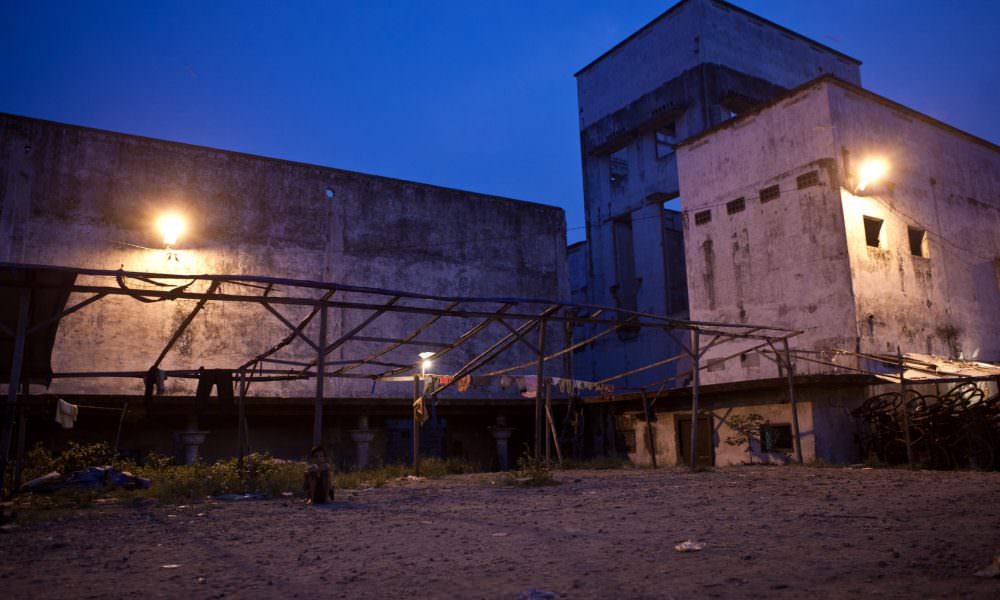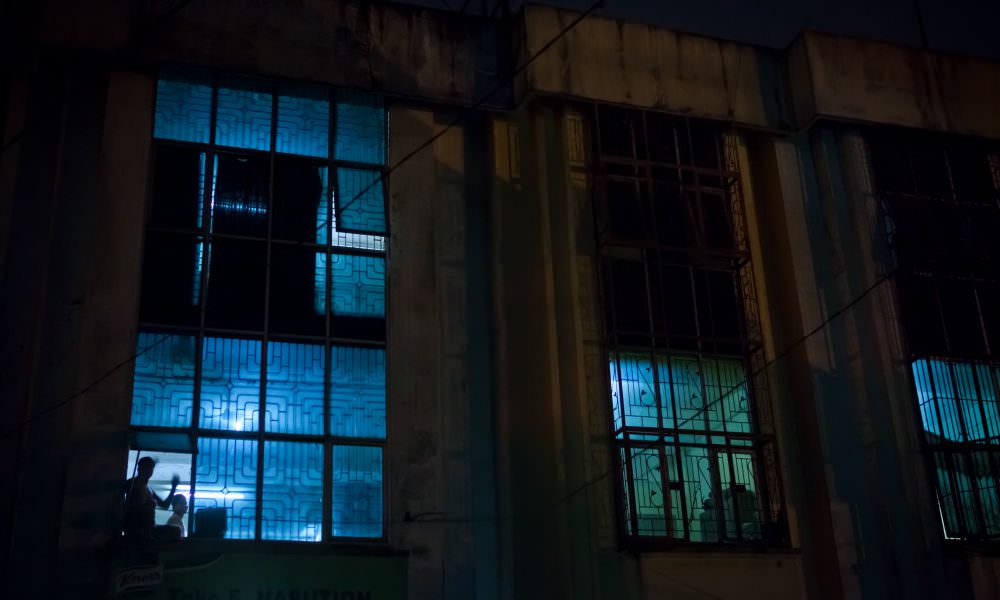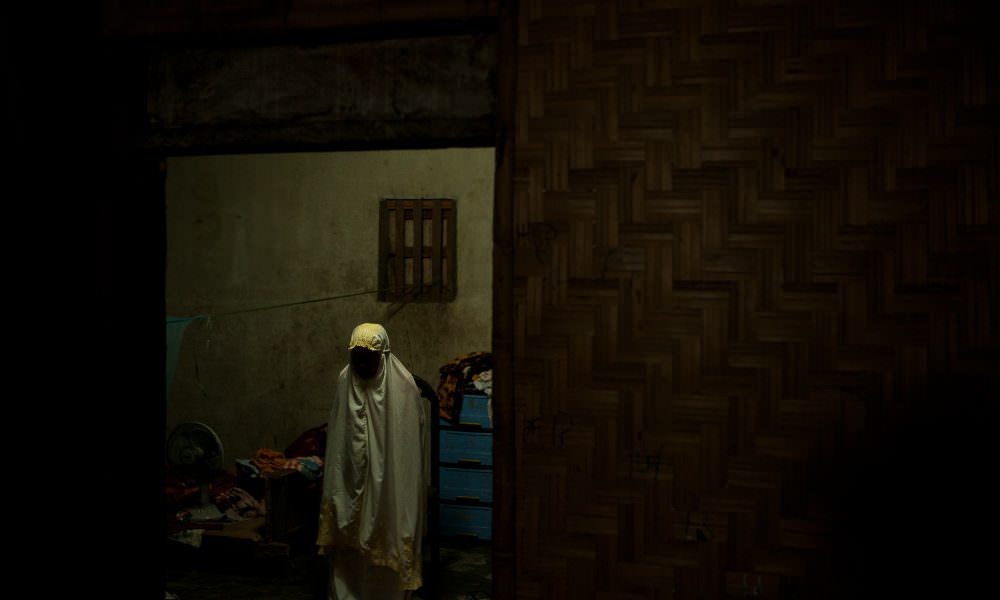THE ACT OF KILLING
A film by Joshua Oppenheimer
The Film
In a country where killers are celebrated as heroes, the filmmakers challenge unrepentant death squad leaders to dramatize their role in genocide. The hallucinatory result is a cinematic fever dream, an unsettling journey deep into the imaginations of mass-murderers and the shockingly banal regime of corruption and impunity they inhabit.
Synopsis Anwar Congo and his friends have been dancing their way through musical numbers, twisting arms in film noir gangster scenes, and galloping across prairies as yodeling cowboys. Their foray into filmmaking is being celebrated in the media and debated on television, even though Anwar Congo and his friends are mass murderers. Medan, Indonesia.
Today, Anwar is revered as a founding father of a right-wing paramilitary organization that grew out of the death squads. The organization is so powerful that its leaders include government ministers, and they are happy to boast about everything from corruption and election rigging to acts of genocide.

In 1965, the army recruited them to form death squads because they had a proven capacity for violence, and they hated the communists for boycotting American films – the most popular (and profitable) in the cinemas. Anwar and his friends were devoted fans of James Dean, John Wayne, and Victor Mature. They explicitly fashioned themselves and their methods of murder after their Hollywood idols. And coming out of the midnight show, they felt “just like gangsters who stepped off the screen”. In this heady mood, they strolled across the boulevard to their office and killed their nightly quota of prisoners. Borrowing his technique from a mafia movie, Anwar preferred to strangle his victims with wire.
In THE ACT OF KILLING, Anwar and his friends agree to tell us the story of the killings. But their idea of being in a movie is not to provide testimony for a documentary: they want to star in the kind of films they most love from their days scalping tickets at the cinemas. We seize this opportunity to expose how a regime that was founded on crimes against humanity, yet has never been held accountable, would project itself into history. And so we challenge Anwar and his friends to develop fiction scenes about their experience of the killings, adapted to their favorite film genres – gangster, western, musical. They write the scripts. They play themselves. And they play their victims. Their fiction filmmaking process provides the film’s dramatic arc, and their film sets become safe spaces to challenge them about what they did. Some of Anwar’s friends realize that the killings were wrong.
Others worry about the consequence of the story on their public image. Younger members of the paramilitary movement argue that they should boast about the horror of the massacres, because their terrifying and threatening force is the basis of their power today. As opinions diverge, the atmosphere on set grows tense.
The edifice of genocide as a “patriotic struggle”, with Anwar and his friends as its heroes, begins to sway and crack. Most dramatically, the filmmaking process catalyzes an unexpected emotional journey for Anwar, from arrogance to regret as he confronts, for the first time in his life, the full implications of what he’s done. As Anwar’s fragile conscience is threatened by the pressure to remain a hero, THE ACT OF KILLING presents a gripping conflict between moral imagination and moral catastrophe.

Anwar
Historical Context
THE 1965 – 1966 MASSACRES IN INDONESIA
Edited from observations on the massacres, their aftermath and implications, by Historian John Roosa.
Additional opening and closing notes by Joshua Oppenheimer. In 1965, the Indonesian government was overthrown by the military. Sukarno, Indonesia’s first president, founder of the non-aligned movement, and leader of the national revolution against Dutch colonialism, was deposed and replaced by right-wing General Suharto.
The Indonesian Communist Party (PKI), which had been a core constituency in the struggle against Dutch colonialism, and which had firmly supported President Sukarno (who was not a communist), was immediately banned. On the eve of the coup, the PKI was the largest communist party in the world, outside of a communist country. It was officially committed to winning power through elections, and its affiliates included all of Indonesia’s trade unions and cooperatives for landless farmers.
Its major campaign issues included land reform, as well as nationalizing foreign-owned mining, oil, and plantation companies. In this, they sought to mobilize Indonesia’s vast natural resources for the benefit of the Indonesian people, who, in the aftermath of three hundred years of colonial exploitation, were, on the whole, extremely poor. After the 1965 military coup, anybody opposed to the new military dictatorship could be accused of being a communist.

Director Josh Openheimer
In America, the massacre was regarded as a major “victory over communism,” and generally celebrated as good news. Time Magazine reported “the West’s best news for years in Asia,” while The New York Times ran the headline, “A Gleam of Light in Asia,” and praised Washington for keeping its hand in the killings well hidden. (The scapegoating of the ethnic Chinese, who had come to Indonesia in the 18th and 19th centuries, was done at the incitement of the US intelligence services, which sought to drive a wedge between the new Indonesian regime and the People’s Republic of China.
1.10.1965: The Thirtieth of September Movement (Gerakan 30 September, or G30S), made up of disaffected junior Indonesian Armed Forces Officers, assassinated six Indonesian Army Generals in an abortive coup and dumped their bodies down a well south of the city. At the same time, the Movement’s troops took over the national radio station and announced that they intended to protect President Sukarno from a cabal of right-wing army generals plotting a seizure of power.
The Movement was defeated before most Indonesians knew it existed. The senior surviving army commander, Major General Suharto, launched a quick counter-attack and drove the Movement’s troops from Jakarta within one day. Suharto accused the Communist Party of Indonesia (PKI) of masterminding the Movement and then orchestrated an extermination of persons affiliated with the party.
Suharto’s military rounded up over a million and a half people, accusing all of them of being involved in the Movement. In one of the worst bloodbaths of the 20th century, hundreds of thousands of individuals were massacred by the army and its affiliated militias, largely in Central Java, East Java, Bali, and North Sumatra from late 1965 to mid-1966. In a climate of national emergency, Suharto gradually usurped President Sukarno’s authority and established himself as the de facto president (with the power to dismiss and appoint ministers) by March 1966. The massacres were out of all proportion to their ostensible cause.
The Movement was a small- scale conspiratorial action organized by a handful of people. In total, it killed twelve people. Suharto exaggerated its magnitude until it assumed the shape of an ongoing, nation-wide conspiracy to commit mass murder. All the millions of people associated with the PKI, even illiterate peasants in remote villages, were presented as murderers collectively responsible for the Movement.
Indonesian government and military officials, to the very end of the Suharto regime in 1998,invoked the specter of the PKI in response to any disturbance or sign of dissent. The key phrase in the regime’s argument was “the latent danger of communism.” The unfinished eradication of the PKI was, in a very real sense, the raison d’être of the Suharto regime. The original legal act under which the regime ruled Indonesia for over thirty years was Sukarno’s presidential order of 3rd October 1965, authorizing Suharto to “restore order.” That was an emergency order. But for Suharto, the emergency never ended.
In constructing a legitimating ideology for his dictatorship, Suharto presented himself as the savior of the nation for having defeated the Movement. His regime incessantly drilled the event into the minds of the populace by every method of state propaganda: textbooks, monuments, street names, films, museums, commemorative rituals and national holidays.
The Suharto regime justified its existence by placing the Movement at the centre of its historical narrative and depicting the PKI as ineffably evil. Under Suharto, anti-communism became the state religion, complete with sacred sites, rituals, and dates. It is remarkable that the anti-PKI violence, as such a large-scale event, has been so badly misunderstood. No doubt, the fact that both military personnel and civilians committed the killings has blurred the issue of responsibility. Nonetheless, from what little is already known, it is clear that the military bears the largest share of responsibility and that the killings represented bureaucratic, planned violence more than popular, spontaneous violence.
The Suharto clique of officers, by inventing false stories about the Movement and strictly controlling the media, created a sense among civilians that the PKI was on the warpath. If there had not been this deliberate provocation from the military, the populace would not have believed the
PKI was a mortal threat since the party was passive in the aftermath of the Movement. (The military worked hard to whip up popular anger against the PKI from early October 1965 onwards; and the US Government actively encouraged the Indonesian military to pursue rank and file communists). It prodded civilian militias into acting, gave them assurances of impunity, and arranged logistical support. Contrary to common belief, frenzied violence by villagers was virtually unheard of. Suharto’s army usually opted for mysterious disappearances rather than exemplary public executions. The army and its militias tended to commit its large-scale massacres in secret: they took captives out of prison at night, trucked them to remote locations, executed them, and then buried the corpses in unmarked mass graves or threw them into rivers.
The tragedy of modern Indonesian history lies not just in the army-organized mass killings of 1965-66 but also in the rise to power of the killers, of persons who viewed massacres and psychological warfare operations as legitimate and normal modes of governance. A regime that legitimated itself by pointing to a mass grave at the site of the well, vowing “never again,” left countless mass graves from one end of the country to the other, from Aceh on the western edge to Papua on the eastern edge. The occupation of East Timor from 1975 to 1999 similarly left tens, if not hundreds, of thousands dead, many anonymously buried. Each mass grave in the archipelago marks an arbitrary, unavowed, secretive exercise of state power.
The obsession with a relatively minor event (the Movement) and the erasure of a world- historical event (the mass killings of 1965-66) has blocked empathy for the victims, such as the relatives of those men and women who disappeared. While a monument stands next to the well in which the Movement’s troops dumped the bodies of the six army generals on October 1, 1965, there is no monument to be found at the mass graves that hold the hundreds of thousands of persons killed in the name of suppressing the Movement. Focus on who killed the army generals on 30th September, 1965 has functioned as a fetish, displacing all attention from the murder of over one million alleged communists in the months that followed.
Suharto’s regime produced endless propaganda about the brutal communists behind the killing of the generals, and still today most discussion of the genocide has been displaced by this focus. And this is true even in most English-language sources. To me, participating in the debate around “who killed the generals” feels grotesque, which is why it does not feature in THE ACT OF KILLING.
The Rwandan genocide was triggered when Rwandan president Juvénal Habyarimana (a Hutu) died after his airplane was shot down on its approach to Kigali. To focus on who shot down the plane (was it Tutsi extremists? was it Hutu extremists acting as provocateurs?) rather than the murder of 800,000 Tutsis and Hutu moderates over the next 100 days would be unconscionable.
Similarly, who started the Reichstag fire is irrelevant to an understanding of the Holocaust. Whether or not the disgruntled army officers behind the killing of the six generals had the support of the head of the PKI is much more than beside the point: it plays the pernicious role of deflecting attention from a mass murder of world-historical importance. Imagine if, in Rwanda, the fundamental question about what happened in 1994 was “who shot down the president’s plane?” This would only be thinkable if the killers remained in power.










